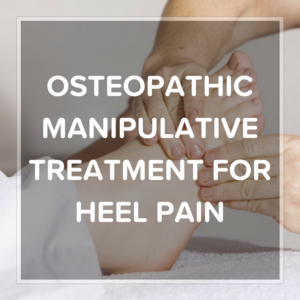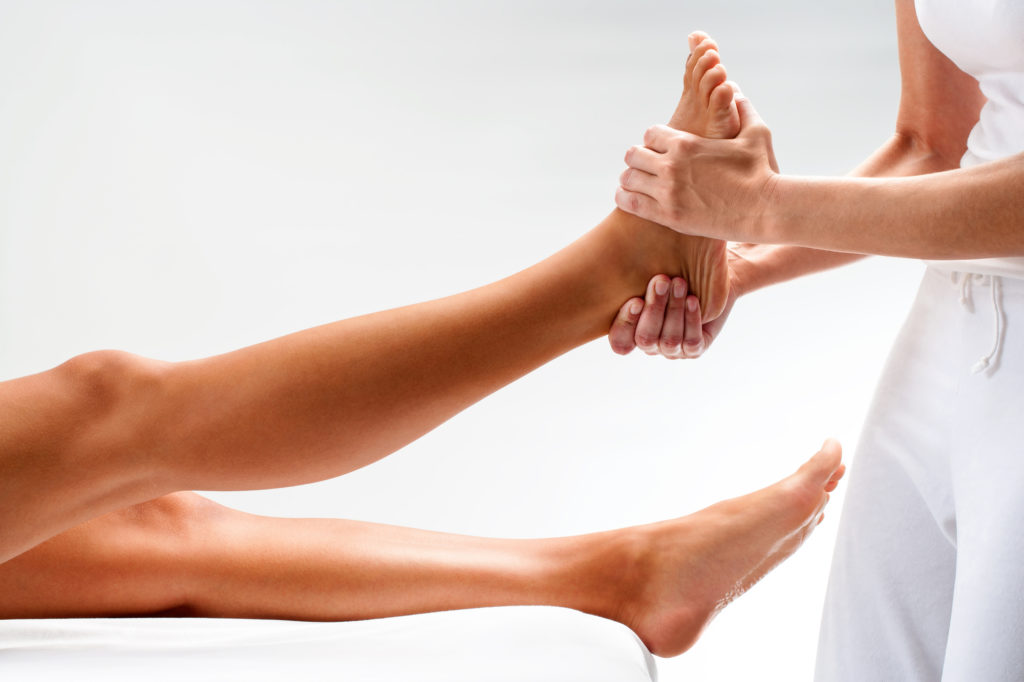 Osteopathic Manipulative Treatment (OMT for short) is a treatment for Plantar Fasciitis that involves manipulating the bones and connective tissues in the foot to help them align properly, bear weight more effectively, and work correctly in tandem with the arch of your foot.
Osteopathic Manipulative Treatment (OMT for short) is a treatment for Plantar Fasciitis that involves manipulating the bones and connective tissues in the foot to help them align properly, bear weight more effectively, and work correctly in tandem with the arch of your foot.
This noninvasive treatment is usually performed by an osteopath, a doctor who specializes in holistic (whole-body) medicine and musculoskeletal problems. Osteopathic doctors typically emphasize noninvasive treatment options and proper alignment as the basis for healing.
What is OMT, what are the pros and cons of this type of treatment, how much does it cost, and where can you find a provider for this treatment?
What is OMT?
OMT, or Osteopathic Manipulative Treatment is a type of physical therapy for Plantar Fasciitis that helps realign the bones and soft tissues in the foot.
Unlike some treatments, OMT takes a whole-body, holistic approach to healing. In other words, while your osteopath will gently manipulate your foot bones and tissues, he or she will also look at the alignment of your ankles, legs, and hips.
Robert Truax, DO, says. “For [pain from plantar fasciitis] the evaluation and treatment both begin with the hips. I evaluate the lower back and pelvic areas because the foot lands where the hips tell it to. If there is tightness or restriction in the hips, the foot lands incorrectly, setting up abnormal stress loads that can result in pain.”
During each treatment session, your doctor will apply gentle pressure, targeted stretches, some elements of massage, and other exercises to encourage the bones, muscles, and ligaments to align properly. You can also expect to be given “homework” in the form of additional exercises and stretches, rest and icing, taping, and wearing orthotic insoles to help stabilize gait, support the arch, and align the posture properly.
Pros and Cons of Osteopathic Manipulative Treatment
While OMT isn’t backed by a lot of evidence, the pros outweigh the cons for many people with plantar fasciitis:
Pros of Osteopathic Manipulative Treatment

In general, OMT has very few risks, and uses many different techniques that are supported by solid evidence (like stretching and orthotics!)
Noninvasive and Painless
OMT doesn’t involve incisions, surgical instruments, or expensive equipment. The experience is painless and totally noninvasive.
Relatively Inexpensive
While costs of OMT can vary depending on your provider and whether the treatment is covered by insurance, most people end up paying somewhere in the neighborhood of $100 per session, a small cost in comparison with many treatments. Some osteopathic doctors offer discounts for booking several sessions at once.
Significant Anecdotal Evidence, and Proven Techniques
While OMT doesn’t have the distinction of many scientific studies or clinical trials, it does incorporate a lot of proven conservative treatments for plantar fasciitis, including stretching, icing, massage, and the use of orthotics.
OMT also has plenty of anecdotal evidence to back it up, from people who have had success with an osteopathic doctor. If you’re considering OMT, it can be helpful to talk to real people who have had this type of treatment.
Whole-Body Focus
Plantar fasciitis usually develops as a result of multiple factors and multiple body systems (like excess body weight combined with improper gait, combined with overuse in exercise). It only makes sense that a whole-body approach to plantar fasciitis that takes into account gait, alignment, posture, and musculoskeletal health along with biomechanics in the foot, ankle, hips, and legs would be very helpful in healing.
Cons of Osteopathic Manipulative Treatment

OMT doesn’t have a lot of evidence to back it up, which is the primary con. You should also take care that your provider uses non-thrusting techniques, which have the potential to damage bones and tissues.
Minimal Clinical Evidence
A review of OMT-related studies conducted by Warwick Medical School showed that more evidence, and higher-quality studies are needed to make any definite conclusions about osteopathic manipulative treatment.
However, this doesn’t mean this treatment is ineffective–it just means OMT hasn’t been proven effective. It just means that you should proceed with caution before investing a lot of money or time into this procedure. Given the minimal risks and side effects from OMT, many people feel that this treatment is worth a try–and many have had significant success!
Caution with Thrusting Techniques
Thrust techniques aren’t usually part of plantar fasciitis treatments; however, these more abrupt, forceful movements can carry a higher risk of trauma or complications, so talk to your osteopath before your treatment to ask about what techniques will be used, and whether your OMT will be low or high velocity, and thrusting or non-thrusting.
Where Can I Get OMT?
You’ll need to find a DO, or doctor of osteopathy to get OMT treatment. You can find a DO in your area on osteopathic.org. Make sure to ask the osteopath you choose whether or not they offer this treatment, since some practitioners may not offer certain treatments.
In case you’re wondering, an osteopath has completed four years of medical school, and many have additional medical training. Your osteopath will be able to help you with OMT, and is also fully authorized to prescribe and perform other medical interventions and prescribe medications.
Is OMT right for you? For many people with heel pain from plantar fasciitis, the answer is a resounding yes. And while this modality doesn’t have a lot of high quality studies or evidence backing it up, that just makes it extra important to do your research, know what to expect, and proceed with caution while continuing proven conservative treatments for plantar fasciitis like orthotics, stretching, icing, and rest.




I bought the full insert of heel seat and now when I wear my shoes with it I don’t feel any pain especially when playing golf.